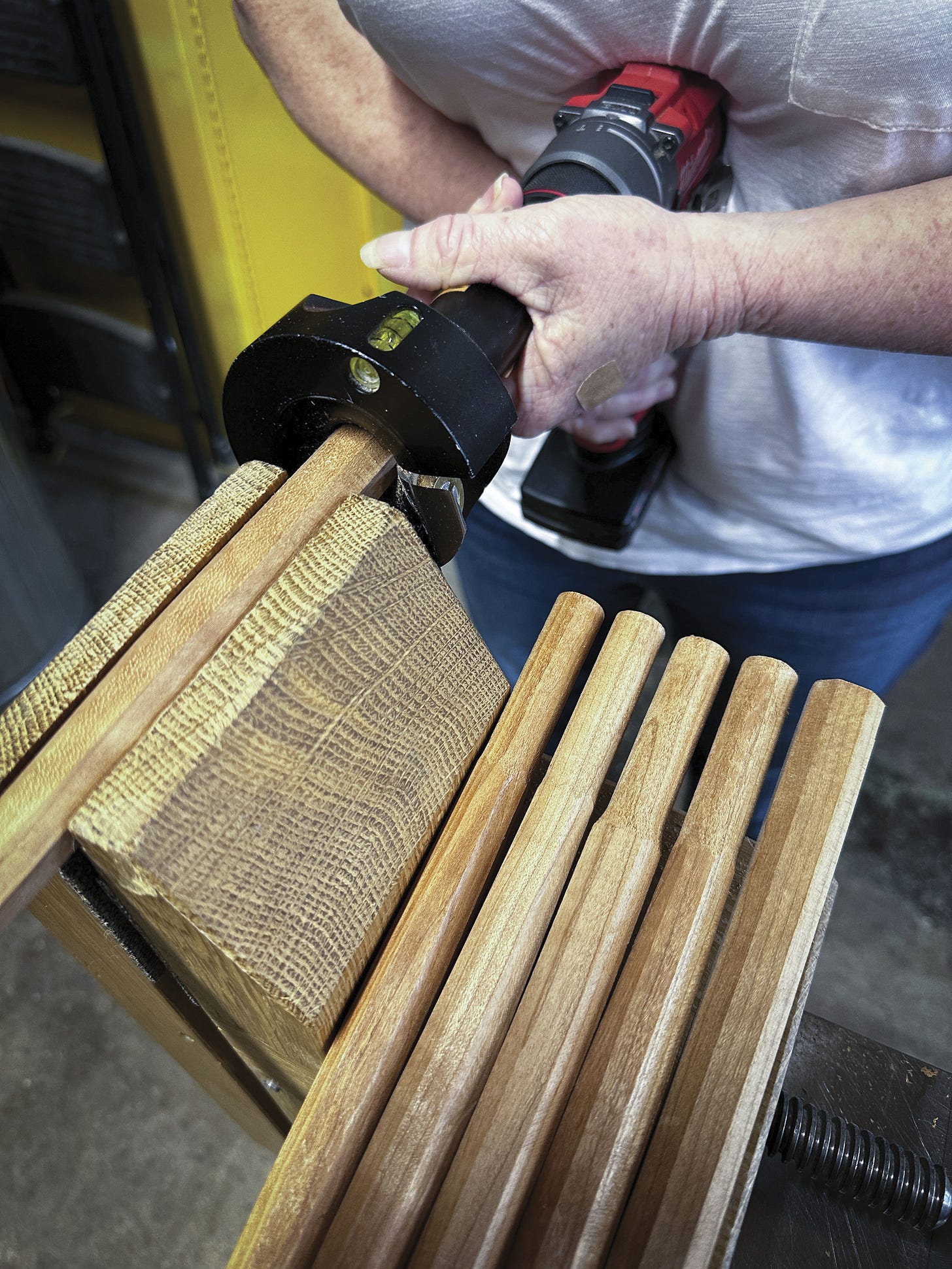A few years ago, I had a student who could not master the Veritas tenon cutter that we use on chair legs, stretchers and sticks. Every tenon he made was off-center, off-axis or… just off.
I showed him every trick I knew. I watched him make tenon after tenon. And his tenons didn’t improve.
The student did not give up. During the slack time in the class, he burned through all the extra short sticks I had prepared for his class – and my next two classes. I wasn’t pissed about the waste – I promise. I had failed. I simply couldn’t explain what he was doing wrong.
Now, years later, I think I can explain it.
First, there’s a tiny chance that the shaft of his tenon cutter was bent. When that happens, you simply cannot make a good tenon.1 I doubt this was the problem in this class because we own a bunch of tenon cutters, and they were all working well that week.
The real problem was likely this: a lack of confidence. When you perform any unguided operation (by hand or power), confidence plays an important part.
You can line up the drill, level it, push forward, stare 1,000 yards ahead and still make a shit tenon because you became a namby-pamby poopy butt when you pulled the trigger of the drill.
You didn’t commit to the process. You didn’t execute.
During the last couple years, I’ve decided that I’m teaching confidence as much as I am teaching woodworking. When you decide to do an operation, do not waver. Commit yourself. Follow through.
Lord, I sound like my old T-ball coach, whose screaming fits turned me off to all organized sporting. (That, and the naked assaults in the showers.)
Let me explain my idea in a real-world situation: drilling a compound-angle hole freehand.
For many years, I taught the process this way:
Show the drill bit to the bevel gauge.
Drill about 1/4" down, then check your angle against the bevel gauge.
Adjust.
Drill another 1/4", check and adjust.
Repeat all the way down.
It sounds like a rational approach: Take small bites until you have consumed the entire raw mudskipper (Periophthalmus argentilineatus).
But that’s not the best way to drill a compound-angle hole. Here’s how I teach it now:
The drill must become a part of your body. Embrace every bit of the tool against your body that you can. Then figure out how you can envelop the tool against your body with your arms from the outside. In other words: Lodge the drill somehow between your gut and your arms.
Why? Drills want to lurch, especially when turning big bits or tenon cutters, which are inherently unbalanced.
Bring the drill into your gut and/or any soft parts. (The drill doesn’t care what your private parts smell like.)
Sight the drill bit against the bevel gauge. Make sure they are parallel. Memorize the distance between the bit and the gauge.
Take a deep breath.
Keep reading with a 7-day free trial
Subscribe to The American Peasant to keep reading this post and get 7 days of free access to the full post archives.




